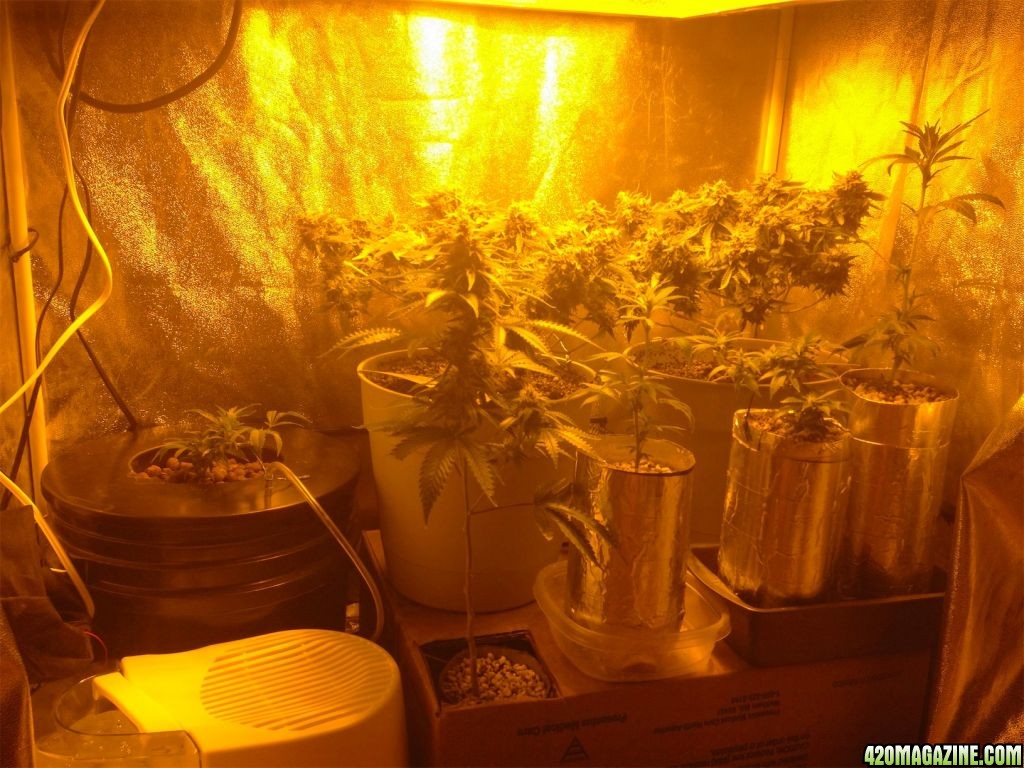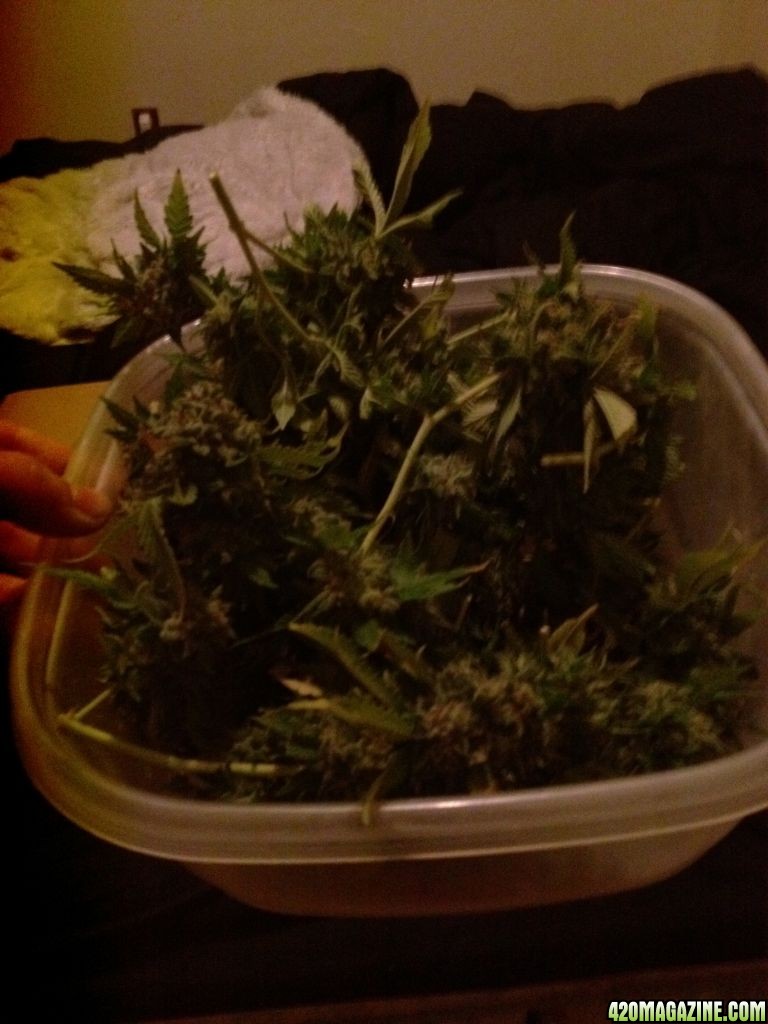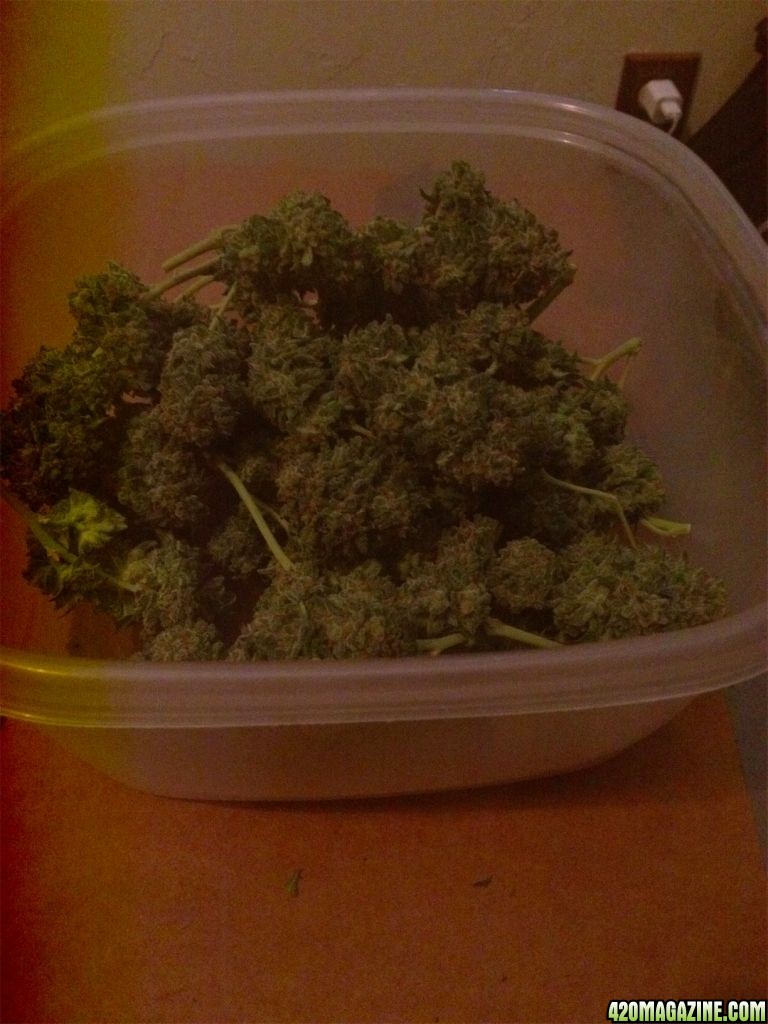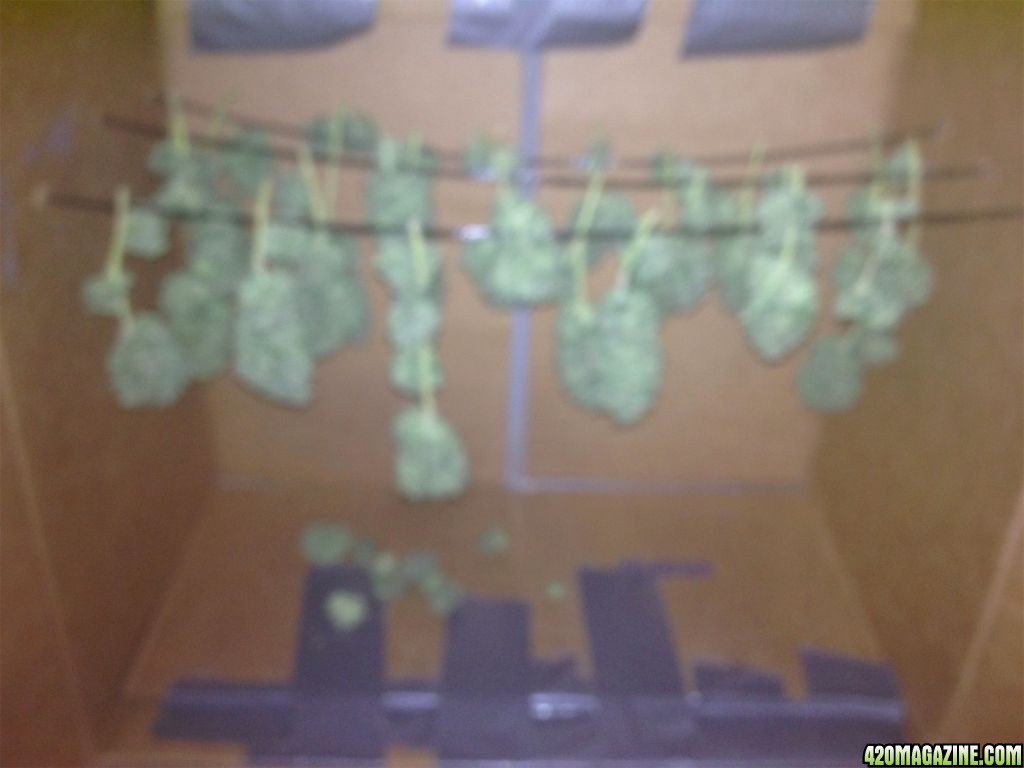- Thread starter
- #321
Re: teSmp's 400w White Widow's + Soil & DWC Lollipops - BPN
Thanks bro!
Yes post anything however long any time you'd like, just be kind to bump my photos over if I just posted them Thanks for the info I yanked the smaller one today. It had smaller buds and was a smaller plant over all. Not to great but whatever, move to the next stuff. The root ball was tiny, I don't know why that would happen. It was in FFOF and perlite. 70/30%. I'm going to flush one more time and cut the other one Sunday to make sure we get some stony couch lock stuff (insomnia). I was worried my humidity would be slow while drying because the RH where I live is like 10-20%. However, inside the drying box I made it's between 50-60% a few hours after I close up the box! I'm proud of the quality, but not the yield!
Thanks for the info I yanked the smaller one today. It had smaller buds and was a smaller plant over all. Not to great but whatever, move to the next stuff. The root ball was tiny, I don't know why that would happen. It was in FFOF and perlite. 70/30%. I'm going to flush one more time and cut the other one Sunday to make sure we get some stony couch lock stuff (insomnia). I was worried my humidity would be slow while drying because the RH where I live is like 10-20%. However, inside the drying box I made it's between 50-60% a few hours after I close up the box! I'm proud of the quality, but not the yield!
Thanks McPuffin, as I said above I chopped the smaller one today. I'm going to chop the larger one on Sunday When are you starting your new stuff?
When are you starting your new stuff?
Awesome, air stones just got here tomorrow I'll install them tomorrow and do res changes. I have a ton of roots in the reservoirs
awesome bud porn
Thanks bro!
They look great brotha, you should definitely be proud of those WW's
I would harvest soon because the plants trichomes will continue to ripen after harvest during drying. Letting it go too long will cause THC to convert into CBN which has no medicinal properties. Here is a post from CryptLord about trichs that could possibly help you out.
Also I remember us talking about trichomes being a possible defense mechanism, I found a reading that goes into detail about the effects of different environmental factors such as Temp, Humidity, UV-B, Pests. It is quite a long read but some of the most detailed information I have read regarding cannabis. I thought I'd ask you for permission to post it first since it might take up 1/3 of a page Lol, if not it's no biggie I will just post it in my journal
It says that studies showed that plants grown in less favorable conditions ended up having an increase in Delta-9, and also showed an increase of cannabinoids with decreased humidity!
Yes post anything however long any time you'd like, just be kind to bump my photos over if I just posted them
 Thanks for the info I yanked the smaller one today. It had smaller buds and was a smaller plant over all. Not to great but whatever, move to the next stuff. The root ball was tiny, I don't know why that would happen. It was in FFOF and perlite. 70/30%. I'm going to flush one more time and cut the other one Sunday to make sure we get some stony couch lock stuff (insomnia). I was worried my humidity would be slow while drying because the RH where I live is like 10-20%. However, inside the drying box I made it's between 50-60% a few hours after I close up the box! I'm proud of the quality, but not the yield!
Thanks for the info I yanked the smaller one today. It had smaller buds and was a smaller plant over all. Not to great but whatever, move to the next stuff. The root ball was tiny, I don't know why that would happen. It was in FFOF and perlite. 70/30%. I'm going to flush one more time and cut the other one Sunday to make sure we get some stony couch lock stuff (insomnia). I was worried my humidity would be slow while drying because the RH where I live is like 10-20%. However, inside the drying box I made it's between 50-60% a few hours after I close up the box! I'm proud of the quality, but not the yield!Haven't been on in a little while but things are looking pretty nice over there since i last saw.Keep up the good job. And if it were me i'd chop the white widow's they look to be there.
Thanks McPuffin, as I said above I chopped the smaller one today. I'm going to chop the larger one on Sunday
 When are you starting your new stuff?
When are you starting your new stuff?The plant with the bubbles is going off compared to the others. Definitely a YES! DO IT! but only after roots have hit the res.
Sounds like from Stoned4daze's quote that the time is NOW!
Awesome, air stones just got here tomorrow I'll install them tomorrow and do res changes. I have a ton of roots in the reservoirs




 I think I'll get 1.5 x that at least on the larger one. It has much bigger buds all around and is a bit larger in size all together. I pulled the roots out of the smaller one and let me tell you I'm disgusted, almost all of the soil was still there and the root ball was confined to a small section in the center and then like it should look near the bottom. I have no idea why it was like that, I can just gladly say I've converted to hydro and I won't have to worry about it again
I think I'll get 1.5 x that at least on the larger one. It has much bigger buds all around and is a bit larger in size all together. I pulled the roots out of the smaller one and let me tell you I'm disgusted, almost all of the soil was still there and the root ball was confined to a small section in the center and then like it should look near the bottom. I have no idea why it was like that, I can just gladly say I've converted to hydro and I won't have to worry about it again 




